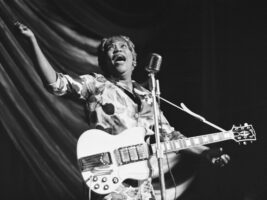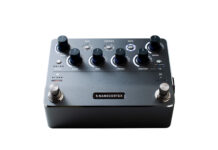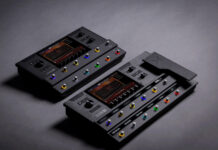
Why have we forgotten the greatest female guitar heroes? The pioneering women who shaped guitar history
In the early 1920s, amongst the gospel community in Cotton Plant, Arkansas, a six-year-old girl was busy mastering a strange yet intriguing musical instrument. There were strings on it which, when plucked, each sounded higher than the last, and she found that picking and strumming them beneath the swing of the gospel choir added a new dimension to the music that she couldn’t yet grasp.
READ MORE: “We just looked at each other in awe” the truth behind why Jimi Hendrix started smashing guitars on stage
As the years rolled on and the girl started touring church conventions with her mother, she learned more about this enthralling thing called the guitar. Practice taught her that combining certain elements from gospel music like call and response patterns and complex rhythms with the guitar’s charismatic twang created a new kind of music that was unfamiliar.
It had the usual energy and chord progressions that gospel music was known for, but this time there was an infectious back-and-forth groove driven chiefly by the guitar. By the time the late 1930s came around, people were enchanted by her music. She’d secured a spot at a rising nightclub in New York City, The Cotton Plant, and was soon enough signed with Decca Records.
The girl’s name was Sister Rosetta Tharpe. Her astounding ability to popularise the guitar and stitch it together with scraps of gospel music and blues had never been seen before, and it’s widely credited for birthing what’s now known as rock ‘n’ roll.
But if she’s at least partially responsible for inventing one of the most popular musical genres to ever exist (and aptly nicknamed the “Godmother of Rock and Roll”) why don’t more people know and recognise her and the influence she’s had on the entire industry?
Moving The Needle
While there’s undoubtedly been a greater appreciation of Tharpe in guitar circles in recent years, she and those like her rarely get the same level of plaudits as their male contemporaries.
Even when they do get some credit in popular culture, it’s often as part of a wider male-centric storyline. For example, it was great to see Yola powerfully embody Sister Rosetta Tharpe in Baz Luhrmann’s Elvis movie, but she was still part of someone else’s story, not her own.
“The biggest underlying issue is that women guitarists are facing intersectionality,” says Dr Freya Jarman, a researcher in the Department of Music at the University of Liverpool. “Their femaleness gets superseded by maleness. It’s absolutely perfect for somebody like Elvis to come along and blast Rosetta Tharpe’s story out of the water. As women, they get sidelined by people like him, or Muddy Waters, or Chuck Berry.”
Intersectionality is the framework put in place to describe discrimination experienced by someone because of their race, gender, sex, class, sexuality or ability. Because of misogyny, and in some cases racism charged by the Jim Crow laws, women like Tharpe, Memphis Minnie, Elizabeth Cotten and even Mary Ford – a wonderful and influential guitar player in her own right who regularly gets pigeonholed as ‘Les Paul’s wife’ – don’t get the recognition they deserve today.
“There’s a massive scale power dynamic in which whiteness and maleness trumps lots of other things,” continues Jarman. “You do find lots of black men on those lists [of famous rock and blues guitarists] as well, like Prince or Jimi Hendrix. But there’s perhaps a kind of fetishization of blackness, especially when it comes to the blues, because there’s a sort of authenticity about it. But there’s never been a long and strong tradition of women electric guitarists in particular.”
Breaking Stereotypes
There’s an argument against intersectionality that bases itself around the famous female singers of the 20th century who receive much admiration and recognition today. The likes of these women include Aretha Franklin, Nina Simone, Ella Fitzgerald, Billie Holiday, Bessie Smith, Peggy Lee and so on.
But they’re all largely famous for their voices (long-considered an emotional instrument or window to the soul, therefore coded as appropriate for women) if not for their piano playing or songwriting, so was there something fundamentally incompatible about women and the guitar during the last century?
“There’s a lot of policing of women’s bodies around certain instruments,” says Jarman. “There’s all kinds of questions around class and race and appropriate femininity, and it puts huge pressure on women.
“The physicality of the guitar is an interesting thing for a number of reasons,” they continue. “One is the sheer practicality of playing a guitar when you’ve got boobs – there are even guitar companies that specialize in making guitars for the female frame. But there’s a lot to say about how we stereotype some instruments as appropriate for one gender over another. Many of the things that people have said about the electric guitar and women are the same things that people used to say in the early 19th century about the violin and women.
“Today, we consider the violin to be a really feminine instrument – if you look at the string sections of major orchestras, they’re full of women. But people used to say it’s physically inappropriate, or it makes women look awkward when they play the violin. Things started shifting one day for a lot of social reasons and, 150 years later, we’ve forgotten that it was ever like that. So, I do wonder whether there’s hope for the guitar and for women in the future.”
Kerri Layton, guitarist and Memphis Minnie superfan, feels frustrated at the lack of recognition for female guitarists, especially after some like Memphis Minnie publicised the Delta blues by demonstrating enviable fingerpicking techniques.
“It feels like she’s in danger of being forgotten by music culture,” says Layton, who’s also a singer-songwriter and founder of coaching business, Dixiebird Music. Active from the 1920s to the 1950s, Memphis Minnie was revered for being a passionate storyteller, coupling the electric guitar with her original songs that turned heads for showcasing her stentorian voice and masterful fingerpicking licks. She had such skill that people claimed she performed “like a man”.
“To be honest, I don’t understand where the competition comes from,” continues Layton. “Even though it’s a competitive industry, musicians are inherently extremely supportive of each other, and I feel like it’s an industry-created problem. Female musicians have their own challenges which are different to men’s, but I’m over the separation of it all.”
The Pioneers
One of the countless challenges women have faced throughout history is the ideology that invention and pioneering belongs to men. For centuries, what makes someone masculine is their ability to hunt and gather and find new ways to make a living for themselves and for their family. Women have typically been expected to look after and preserve what men have given them – a house, a living and even their children.
So, when you expand that theory, having a woman create something new like a whole musical genre or another way of playing an instrument doesn’t fit the frame. Even in today’s age, this ideology is buried too deep into society, so we reject and ignore anything that goes against it without sometimes realising.
What’s abundantly clear, though, is that every female guitarist to make their mark on the music industry has touched listeners in a uniquely profound way, much like Elvis Presley, B.B. King, Eric Clapton, Chuck Berry, Jimi Hendrix, Albert King and the rest of the rock and blues gods have done themselves.
“I feel like I’ve met [Memphis Minnie] in song,” says Layton. “I felt like her lyrics spoke to me because her songs were really for independent women. Her songs had such strong lyrics. But maybe the narrative has been diluted over time. That sense of authenticity – that she really lived in her music – has been lost today.”
However, perhaps there’s hope yet. Beneath the pomp and explosive adoration smothering Elvis is a little boy who grew up in his own gospel community. Back in 1953, at 18 years old, he walked through the doors of Sun Studios with just the guitar he got for his 11th birthday. He was inexperienced and shy, but he’d heard the strange, exhilarating music Sister Rosetta Tharpe had been making.
“Elvis loved Sister Rosetta,” Gordon Stoker, who worked as a vocalist with both Tharpe and Presley admitted in a 2017 interview with Rolling Stone. “That’s what really attracted Elvis: her pickin’. He liked her singing, but he liked that pickin’ first – because it was so different.”
If you know where to look for it, you’ll find these women and their impact everywhere. Elvis made his own sound that day and shot to fame, never coming down again, but those who inspired him, although ignored for some time, will always be the same.
The post Why have we forgotten the greatest female guitar heroes? The pioneering women who shaped guitar history appeared first on Guitar.com | All Things Guitar.
Source: www.guitar-bass.net












